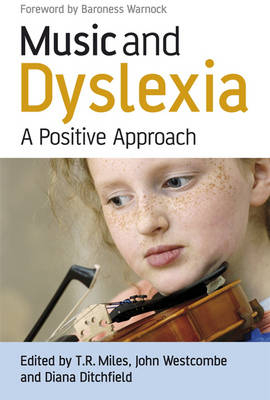
Music and Dyslexia
John Wiley & Sons Inc (Verlag)
978-0-470-06558-7 (ISBN)
Music and dyslexia is of particular interest for two reasons. Firstly, research suggests that music education can benefit young dyslexics as it helps them focus on auditory and motor timing skills and highlights the rhythms of language. Secondly, dyslexic musicians at a more advanced level face particular challenges such as sight-reading, written requirements of music examinations and extreme performance nerves. This is a sequel to the highly successful Music and Dyslexia: Opening New Doors, published in 2001. The field of dyslexia has developed rapidly, particularly in the area of neuropsychology. Therefore this book focuses on these research advances, and draws out the aspects of music education that benefit young dyslexics. The contributors also discuss the problems that dyslexic musicians face, and several chapters are devoted to sight-reading and specific strategies that dyslexics can use to help them sight-read.
The book offers practical techniques and strategies, to teachers and parents to help them work with young dyslexics and dyslexic musicians.
Tim Miles, OBE, MA, PhD, CPsychol., FBPS, was the first professor of Psychology at the University of Wales, Bangor, serving from 1963 to 1987, and is now professor Emeritus. He has published widely both on dyslexia and other topics. he is an amateur cellist. John Westcombe taught music in Inner London before taking advisory and music direction posts in three large LEAs. More recently, consultancy work has been done for Trinity college of Music and Youth Music. Current interests include concert reviewing and Chairing the British Dyslexia Association Music Committee. Heinemann published his careers in Music (1997). Diana Ditchfield Studied piano performance at the royal Irish Academy of Music, before taking degrees in Education and trading in secondary school in the United Kingdom. Her interest in dyslexia started in the 1980s. She teaches piano at the Municipal School of Music in Limerick and is a Learning Support Tutor in Disability Services at University Level.
Foreword. List of contributors.
Preface.
Section I. Tackling problems.
1. Dyslexia and Developmental differences (T. R. Miles).
2. Things that can go wrong (T.R. Miles).
Section II. In and around the classroom.
3. In and around the classroom (Christine McRitchie Pratt).
4. Classroom rhythm games for literacy support (Katie Overy).
5. Early years: Deirdre starts to learn piano (Olivia McCarthy and Diana Ditchfield).
6. Winning over the reluctants (Christine McRitchie Pratt, Diana Ditchfield, Sheila Oglethorpe and John Westcombe).
7. Can music lessons help the dyslexic learner? (Sheila Oglethorpe).
8. Parallels between the teaching of musical and mathematical notation (Tim Miles).
9. The paperwork (Diana Ditchfield).
10. Sight-reading (Sheila Oglethorpe).
11. Sight-reading and memory (Michael Lea).
12. Ten top tips and thoughts (Nigel Clarke).
13. Can computers help? Matching the inner with the outer ear (Adam Apostoli).
Section III. Strategies and successes.
14. Positive connections across the generations (Annemarie Sand and John Westcombe).
15. Similarities and differences in the dyslexic voice (Paula Bishop-Liebler).
16. Thirty-seven oboists (Carolyn King).
17. Suzuki benefits for children with dyslexia (Jenny Macmillan).
18. Dyslexia: no problem (Diana Ditchfield).
Section IV. Science takes us forward.
19. Insights from brain imaging (Katie Overy).
20. Music reading: a cognitive neuroscience approach (Lauren Stewart).
Index.
| Erscheint lt. Verlag | 2.4.2008 |
|---|---|
| Verlagsort | New York |
| Sprache | englisch |
| Maße | 153 x 231 mm |
| Gewicht | 284 g |
| Themenwelt | Kunst / Musik / Theater ► Musik |
| Medizin / Pharmazie ► Gesundheitsfachberufe ► Logopädie | |
| ISBN-10 | 0-470-06558-3 / 0470065583 |
| ISBN-13 | 978-0-470-06558-7 / 9780470065587 |
| Zustand | Neuware |
| Haben Sie eine Frage zum Produkt? |
aus dem Bereich


